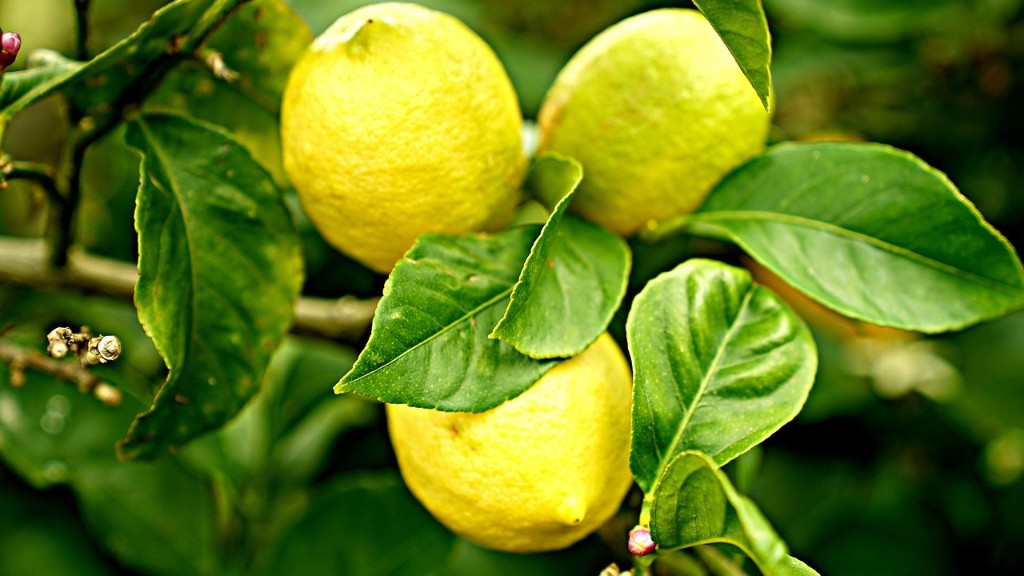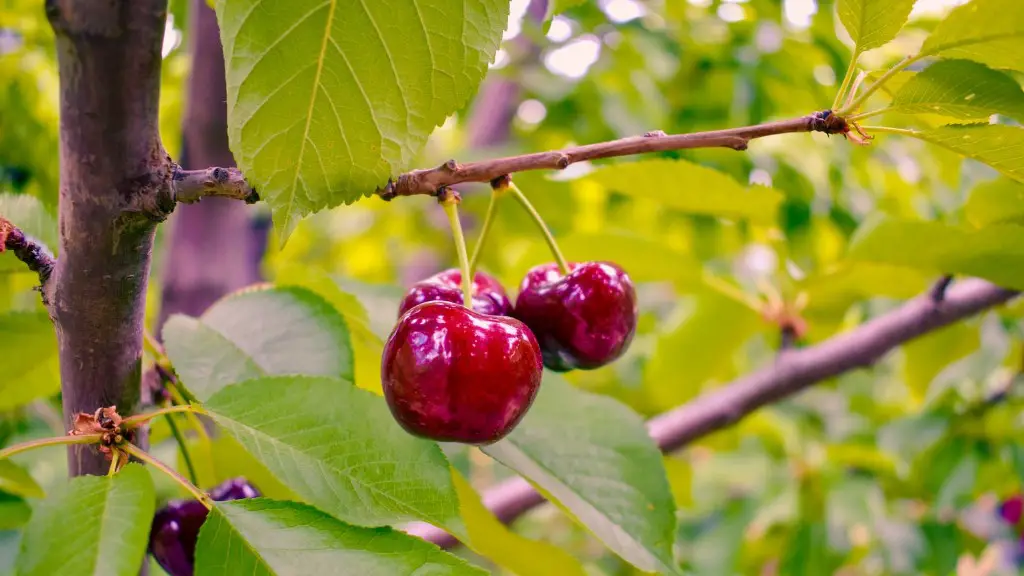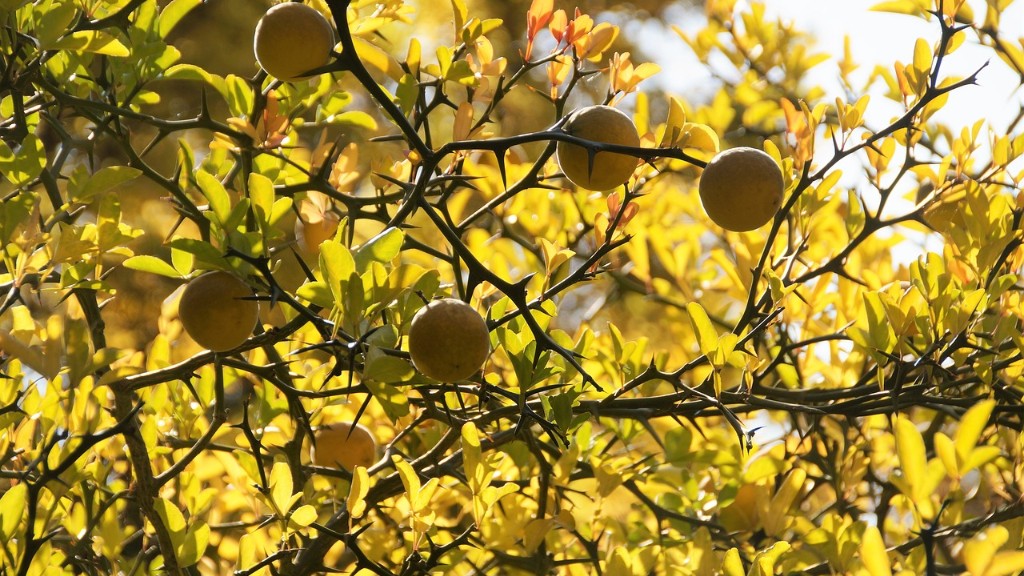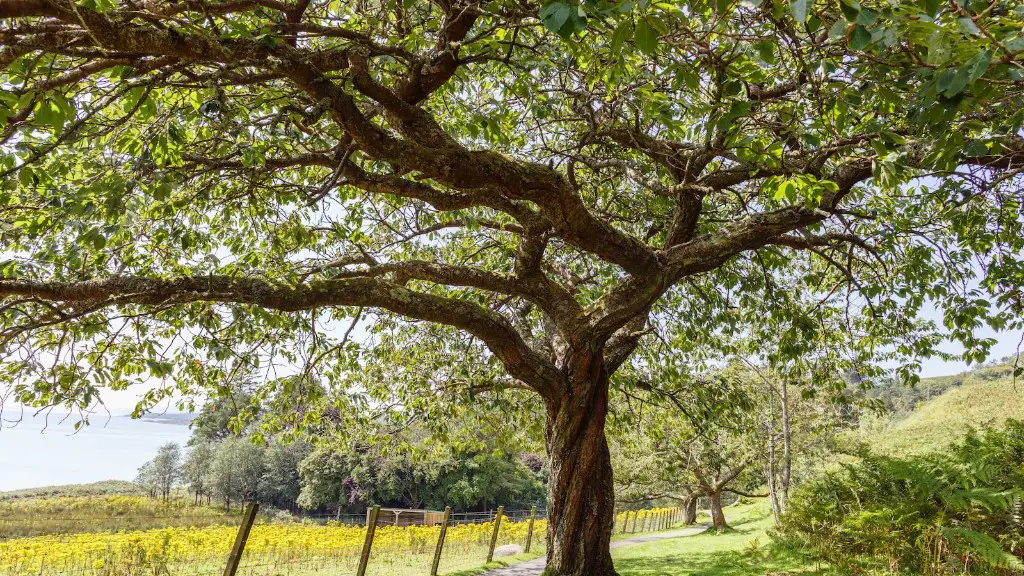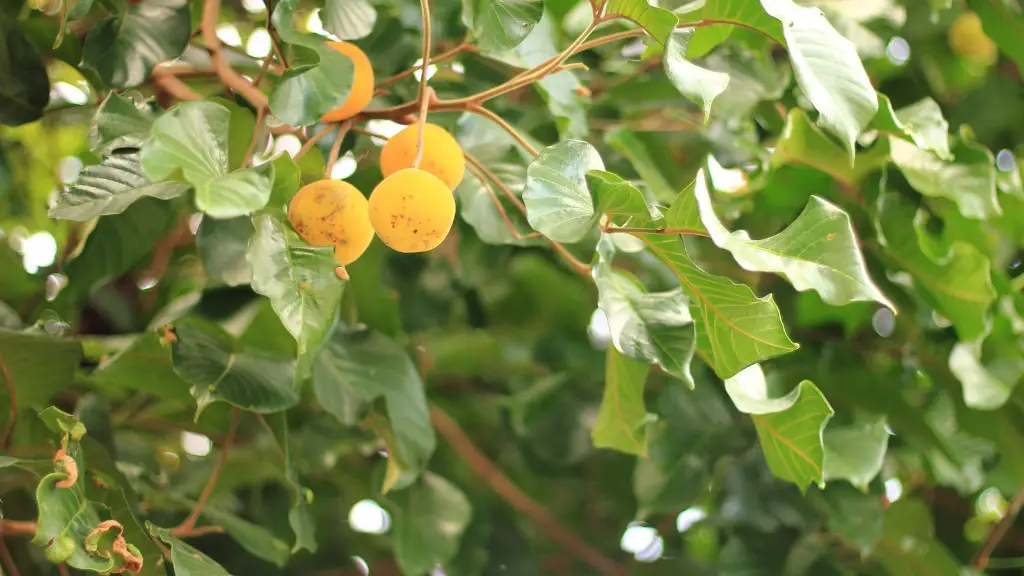Why Are Lemon Tree Leaves Curling?
Lemon tree leaves curl when they become stressed due to environmental factors. Most often, this curling is caused by temperature extremes, a lack of water or not enough light. Other causes of curling leaves can include disease, pests, or nutrition deficiencies.
The most common reason for leaf curling is sudden temperature changes. In the wild, lemon trees can tolerate a wide range of temperatures. However, when temperatures become too hot or too cold, the leaves curl as a form of self-preservation. Warm temperatures that are above 90 degrees Fahrenheit can cause the curling, as can cold temperatures of below 40 degrees Fahrenheit.
Another possible cause is moisture stress. Lemon trees need a consistently moist environment and drought can cause curling. Furthermore, waterlogging and over-watering can also cause the leaves to curl. To prevent this, lemon trees should be watered when the soil begins to dry out.
Inadequate light is another cause of curling. Lemon trees need 6 to 10 hours of direct sunlight per day. Without this, their leaves are likely to become pale, turn yellow and curl.
Diseases, such as citrus leafminer, can cause leaf curl as well. As the name suggests, citrus leafminer is an insect that attacks the leaves of lemon trees, causing them to become yellow and curl up. To prevent this, use traps or spray insecticides when needed.
In some cases, nutritional deficiencies can also cause lemon tree leaves to curl. In this situation, the leaves may also become yellow and distorted due to the lack of essential nutrients. To prevent this, fertilize regularly with a well-balanced citrus fertilizer.
In conclusion, lemon tree leaves curl for a variety of reasons. Most often, this is due to temperature extremes, moisture stress, a lack of light, diseases or nutritional deficiencies. To prevent the curling of leaves, it is important to provide the appropriate environment for a lemon tree to thrive.
Temperature Extremes and Lemon Tree Leaves Curling
Temperature extremes are one of the leading causes of lemon tree leaves curling. These extremes can range from temperatures that are too hot or too cold, either one of these conditions can cause the leaves to curl. This curling can occur due to the lemon tree’s own process of self-preservation, as it tries to protect itself from these rapid changes in temperatures. If a lemon tree is exposed to extended periods of temperatures under 40 degrees Fahrenheit or over 90 degrees Fahrenheit, it is likely that its leaves will curl.
While some levels of cold can be beneficial to a lemon tree (helping to prevent some diseases), excessive cold can cause irreparable damage to the leaves. This damage can be visual, in which the leaves curl, but internal, too. Internal damage can lead to the lemon tree having difficulty producing fruit or developing root rot, due to the cold weather. Therefore, it’s important that lemon trees receive a consistent, mild range of temperatures.
High temperatures above 90 degrees Fahrenheit can be just as detrimental to the lemon tree as cold temperatures are. Lemon tree leaves can yellow and curl when exposed to these temperatures. Additionally, the act of photosynthesis, which lemon trees use to create energy, becomes inhibited. As such, lemon trees need a consistent supply of mild temperatures, that fall between the ranges of 40-90 degrees Fahrenheit.
Consistent temperature extremes can cause lemon tree leaves to become stressed, as the tree tries to cope with these changes. In order to prevent this from happening, it’s important to avoid sudden temperature shifts. This can be done by keeping lemon trees out of drafty areas, and providing ample shade and water during the hottest months. With a consistent and mild temperature range, a lemon tree can thrive and produce plenty of delicious fruit.
Overall, temperatures that are too hot and too cold can cause the curling of lemon tree leaves. To prevent this from occurring, it is important to keep lemon trees in a consistent climate with little to no temperature extremes. This climate should range between the temperatures of 40-90 degrees Fahrenheit.
Moisture Stress and Lemon Tree Leaves Curling
In addition to temperature extremes, moisture levels can play a part in the curling of lemon tree leaves. For lemon trees to thrive, they need consistent moisture in the soil. When a lemon tree experiences drought, it will often cause the leaves to curl up. On the other hand, overwatering can also lead to leaf curling.
During periods of drought, lemon tree leaves may become dry, yellow and curl. This can be due to the lack of moisture in the soil, which means the tree is not getting the water it needs. Dehydration can quickly harm a lemon tree and lead to other problems, such as pests and diseases.
As excessive moisture can be just as detrimental as a lack of moisture. Lemon trees do not appreciate soggy soil. Too much moisture in the soil can keep vital oxygen from reaching the roots, leading to root rot, which can kill the tree. Too much water can also cause the leaves to become deformed and curl up.
To ensure that a lemon is exposed to just the right amount moisture, it is important to water it regularly. A lemon tree should be watered every few days when there is no rain. When watering, consider the climate and types of soil, as this will affect how frequently the tree needs to be watered. Keep in mind that clay soils usually retain more water than sandy soils, so a lemon tree in clay soil may not need to be watered as often as one in sandy soil.
Overall, moisture levels can have an effect on the curling of lemon tree leaves. For this reason, it is important to maintain consistent moisture levels in the soil. Water a lemon tree every few days when there isn’t rain, and take into consideration the climate and types of soil when doing so. Doing this will help prevent the leaves from curling due to moisture levels.
Light and Lemon Tree Leaves Curling
Light is essential for a lemon to grow and thrive. Without enough light, the leaves of a lemon tree will often become pale, yellow and curl up.
Lemon trees need a lot of light in order to photosynthesize and produce energy. They need 6 to 10 hours of direct sunlight in a day. If the tree does not get this amount of light, it will become stunted and unable to grow properly. Furthermore, its leaves are likely to become pale, yellow and curl up.
Providing that a lemon tree has adequate light exposure, it may still be possible for its leaves to curl if it becomes stressed. In this situation, the leaves may yellow, become distorted and tightly curled. To combat this, the lemon tree should be provided with the proper environment to flourish.
The best environment for a lemon tree includes plenty of water, adequate sunlight and consistent temperatures. If a lemon tree is exposed to any of these factors too drastically, it is likely to become stressed and its leaves may curl.
Overall, a lemon tree needs sufficient light in order to grow and thrive. To prevent its leaves from curling up, ensure that it is exposed to 6 to 10 hours of direct sunlight each day. As well, provide the tree with consistent moisture and temperatures the will help to keep the tree in a healthy and thriving state.
Disease and Lemon Tree Leaves Curling
In addition to temperature, moisture and light, disease can also cause lemon tree leaves to curl. One such example of this is citrus leafminer. This pest feeds on the leaves of lemon trees, causing them to become yellow and curl up.
Citrus leafminer is an insect which lays its eggs inside the leaves and stems of citrus trees, such as lemons. When the eggs hatch, the larvae begin to feed on the leaves, causing them to become yellow and distorted. In extreme cases, they become riddled with holes and curl up. As a result of the citrus leafminer, the leaves are unable to produce the energy that the lemon tree needs.
Therefore, it is important to keep the lemon tree protected from this pest. This can be done in several ways, such as using traps, applying approved insecticides, or regularly pruning the tree to get rid of infected leaves. Additionally, look for any signs of infestation early on and treat it as soon as possible to prevent any further damage.
Furthermore, keeping lemon trees away from other citrus trees is also a good way to prevent citrus leafminer. As this pest like to feed on citrus trees, keeping them away from one another can help to keep citrus leafminer at bay.
To conclude, citrus leafminer is a pest which can causes the leaves of a lemon tree to curl. To prevent this from happening, it is important to keep the lemon tree protected with traps, insecticides, pruning and by keeping other citrus trees at a distance.
Nutrition and Lemon Tree Leaves Curling
Nutrition deficiencies can be another cause of lemon tree leaves curling. A tree might lack important nutrients, such as nitrogen and phosphorus, which can lead the leaves to become yellow and curl up.
The soils in which these trees grow can often lack the necessary nutrients. Therefore, it is important to fertilize regularly in order to prevent any nutritional deficiencies from occurring. A well-balanced fertilizer, such as a citrus fertilizer, should be applied to the lemon tree every month. This will help to provide the tree with the nutrients it needs in order to remain healthy and actively grow.
In addition to fertilizing, check the soil pH level and adjust it to the lemon’s needs. Usually, a slightly acidic soil of 6.0-7.0 works best for lemon trees. If the soil’s pH level is too low, add sulfur to raise it. Otherwise, if it is too high, add lime to lower it. This will help the lemon tree take in the necessary nutrients it needs to survive and grow.
Overall, nutrition deficiencies can lead to a lemon tree its leaves curling up. To prevent this, fertilizer should be applied every month. As well, the pH level of the soil should also be checked and adjusted to the lemon tree’s needs.
